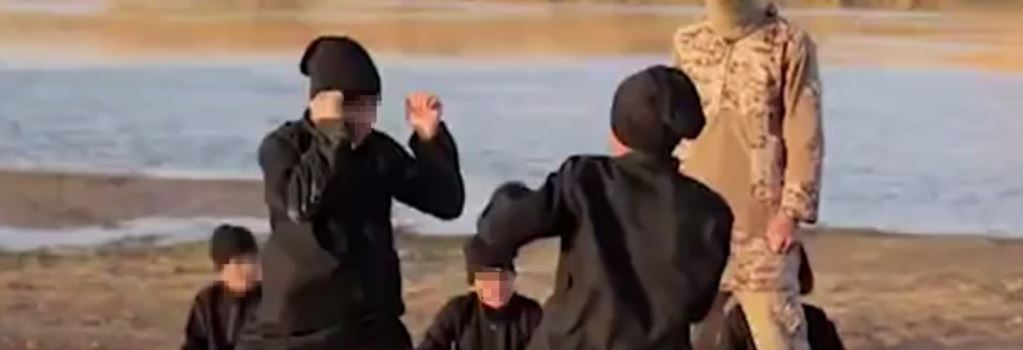Beijing’s security cooperation with the Central Asian states is likely to grow significantly stronger in the coming months.
The militant group Islamic State (IS) recently released a video purportedly showing Uyghurs, a Turkic Muslim group living for centuries in an area that is now the western part of China, training somewhere in the Middle East. One Uyghur speaks in the video, making threats against China.
It was not the first time Uyghurs fighting in Islamic extremist groups threatened China, but this recent video certainly got the attention of the Chinese government.
President Xi Jinping called on March 10 for a “great wall of iron” to protect Xinjiang.
On the western side of Xinjiang, beyond this “iron wall,” is Central Asia.
A simplified view of China’s and Russia’s engagement in Central Asia would be that China is the banker, having spent, invested, or loaned governments in Central Asia tens of billions of dollars just in recent years; while Russia, with military bases in Kyrgyzstan and Tajikistan and still the major supplier of weapons to all five former Soviet republics, is the regional policeman.
There is a lot of overlap here, certainly.
Military Aid
For nearly 20 years now, China has been providing military assistance to the Central Asian states.
Already in November 1999, China gave Kyrgyzstan’s army clothing for troops. In 2002, China gave Kazakhstan $3 million in military equipment. China has been supplying uniforms, vehicles, and military equipment to Tajikistan’s armed forces since at least as far back as 2003.
Much more recently, Turkmenistan’s state television aired brief footage on March 30, 2016, that showed Chinese-made air-defense systems as part of Ashgabat’s growing array of weapons. Uzbekistan is rumored to have purchased the same system and also military drones from China.
China is a member of the Shanghai Cooperation Organization (SCO) and has participated in military counterterrorism exercises with troops from other SCO countries, notably Kazakhstan, Kyrgyzstan, and Tajikistan (Uzbekistan usually does not send troops to such drills).
China has also conducted bilateral exercises with individual Central Asian countries; the first was with Kyrgyz forces in October 2002. Most recently, Chinese troops trained with Tajik troops along Tajikistan’s eastern border with Afghanistan in October 2016.
Joint Operations
Chinese and Tajik forces have gone beyond exercises and conducted joint counternarcotics operations along the Tajik-Afghan border, in some cases up to 200 kilometers away from the Chinese border.
Tajikistan, Afghanistan, and China all meet in the high plateau of the Wakhan Corridor and there have been reports that China has troops, or at least police, in the Afghan section of this narrow strip of territory.
China admits that Chinese and Afghan police have conducted “law enforcement operations in border areas to fight terrorism” but denies the Chinese military is involved.
And then there is other recent news that China has contracted the services of the Frontier Services Group (FSG). FSG executive chairman Eric Prince told the Chinese newspaper Global Times that his firm would be helping China with security and operational tasks in the northwest and southeast corridors of the One Belt, One Road (OBOR) initiative.
Prince is the founder of the private security company Blackwater — now called Academi — which was involved in the U.S.-led campaign in Iraq that started in 2003. In the interview with the Global Times, Prince said FSG would establish an operations base in Xinjiang for the Northwest corridor. He said, “The Northwest corridor includes the countries of Kazakhstan, Uzbekistan, Pakistan, [and] Afghanistan…”
Of course, all this happened before the recent IS Uyghur video surfaced.
Uyghurs Under Pressure
Since the video appeared, Chinese authorities have increased their pressure on the Uyghur population in Xinjiang. Large military parades were conducted in March in major cities in Xinjiang as a reminder of Chinese strength.
This comes after several years of increasing restrictions on Uyghurs that include bans on women dressing in burqas or other Islamic clothing or men having beards. This despite the fact that Uyghur resistance to Chinese rule arguably has more to do with nationalism and is based on fears Uyghur culture is being extinguished by Han Chinese policies.
Even the Chinese government has been reluctant to equate the Uyghur struggle with Islam. Beijing has preferred to refer to problems in Xinjiang as attempted “separatism” but increasingly the focus of Chinese efforts in Xinjiang has been on curtailing the Uyghurs’ religious practices.
Which brings us back to Central Asia, because in the eyes of policy-makers in Beijing, Central Asia is the most likely place for Islamic extremists or their ideas to make their way into Xinjiang.
Ultimate Guarantor
Beijing is likely content to allow Russia to be Central Asia’s ultimate guarantor of security, but, as has been seen, that does not mean Chinese authorities would withhold military assistance to Central Asian governments.
And while China won’t replace Russia in the security equation in Central Asia, Beijing might replace Washington. The United States has provided nonlethal aid to Central Asian governments, such as all-terrain vehicles and in the case of Uzbekistan, even mine-resistant ambush-protected (MRAP) vehicles.
China could provide similar equipment, and the negotiating process for Central Asian governments to obtain such military hardware from China is probably now very short. It would be difficult to imagine China would delay any help that would bolster Central Asia’s efforts toward keeping vestiges of Islamic extremism at bay and thus off of China’s western doorstep.
Since most, if not all, of the military aid that the United States provides Central Asia is simply given free, Central Asian governments are not likely to refuse any of it. But we wouldn’t be surprised at the Qishloq if a far greater quantity of Chinese-made military vehicles, equipment, and maybe more starts appearing in the region soon.
Source: rferl.org

Leave a Reply